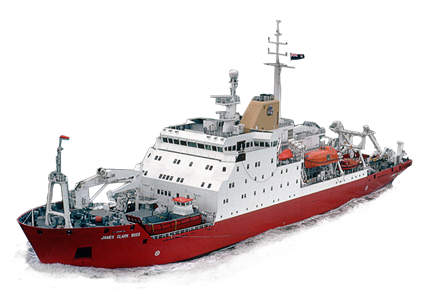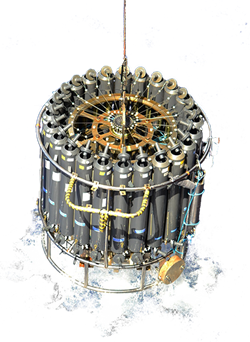AMT programme

The Atlantic Meridional Transect (AMT) is a multidisciplinary programme which undertakes biological, chemical and physical oceanographic research during an annual voyage between the UK and destinations in the South Atlantic. The programme was established in 1995 and since then has completed 25 research cruises involving 242 scientists from 66 institutes in 22 countries.
AMT was originally conceived to test and ground truth satellite algorithms of ocean colour, as the huge (>12,000km) transect passes through a wide range of ocean provinces and conditions, and importantly, crosses the sparsely sampled oligotrophic gyres, in the centre of the North and South Atlantic Oceans.
 Measurements from AMT have already contributed to global datasets used for satellite algorithm development and validation and have been used to assess the performance of satellite ocean colour observations. The programme has proved to be a long-term multidisciplinary ocean observation programme, which is a platform for national and international scientific collaboration, a training arena for the next generation of oceanographers and an ideal platform to evaluate satellite data. The new suite of Sentinel satellites now provides an ideal opportunity for AMT to provide high quality reference measurements to validate the satellite data.
Measurements from AMT have already contributed to global datasets used for satellite algorithm development and validation and have been used to assess the performance of satellite ocean colour observations. The programme has proved to be a long-term multidisciplinary ocean observation programme, which is a platform for national and international scientific collaboration, a training arena for the next generation of oceanographers and an ideal platform to evaluate satellite data. The new suite of Sentinel satellites now provides an ideal opportunity for AMT to provide high quality reference measurements to validate the satellite data.
The benefits of AMT are far-reaching and of high impact to oceanographic research as a whole. The AMT is a well respected and established scientific research programme which has enabled us to gain a greater understanding about our oceans and the biogeochemistry within it. The programme enables scientists to make open ocean observations through a wide latitudal range (100°) covering an enormous range of oceanographic conditions. The data produced has been used across the globe and contributed to both the scientific community and to policy development.
Key facts
- AMT is a long-running research cruise programme providing a unique ocean observation platform for monitoring the health of our seas and conducting scientific research into oceanic processes. On each research cruise a comprehensive set of measurements are taken of ocean parameters over a 13,500km transect of the Atlantic ocean.
- Among other parameters, AMT takes regular measurements of Ocean Colour (OC) and Sea surface Temperature (SST), which are fundamental indicators used to monitor and manage the marine ecosystem for aquaculture, fisheries, water quality, mapping and monitoring harmful algal blooms as well as the ocean’s response to climate change.
- The 26th AMT cruise, which will depart the UK in Sept 16, will use an underway system to continuously measure Ocean Colour among other parameters. Instruments, such as CTDs, will be deployed from the ship to regularly measure a wide range of parameters including electrical Conductivity, Temperature and Depth (pressure).
- AMT4SentinelFRM brings together AMT and the Copernicus programme to allow direct comparison between the data collected from the ship and the data derived from newly launched Sentinel Satellites. The highly reliable ship data will allow scientists to check the accuracy of the satellite data providing fundamental validation of the sentinel satellites and supporting the development of the Copernicus programme.
- The knowledge and findings attained through AMT4SentinelFRM will be shared with the international science community at an open invitation workshop and through publications and dissemination activities. Recommendations for future research will be formulated and shared with the European Space Agency.